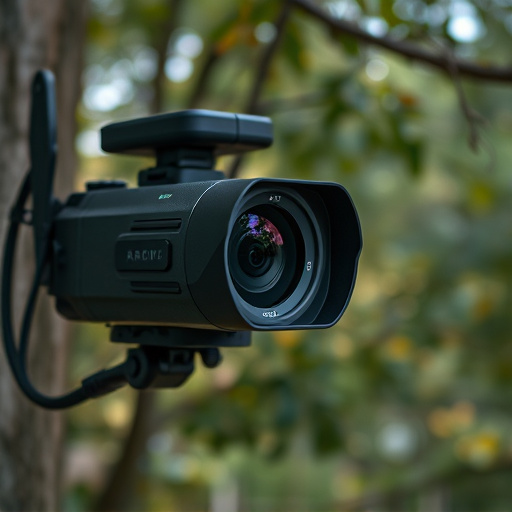Strategically placing tiny cameras for home monitoring in discrete locations like door frames and closets enhances security without compromising aesthetics. Integrated into decorative items or disguised as everyday objects, these AI-powered devices offer comprehensive surveillance, deterring intruders while preserving privacy through advanced encryption and legal adherence.
“Elevate your home security with our comprehensive guide on effective camera concealment methods. Discover innovative strategies to integrate tiny cameras seamlessly into your living space, offering discreet surveillance. From strategic location choices to AI integration blending devices with surroundings, we explore diverse techniques.
Learn about legal boundaries and ethical considerations for surveillance, ensuring peace of mind without infringing privacy. Uncover expert tips on masking camera signals for enhanced security while respecting personal privacy.”
- Choosing Discreet Camera Locations for Home Security
- Creative Ways to Hide Tiny Cameras Around Your House
- Utilizing AI to Blending Cameras with Surroundings
- Legal Considerations and Ethical Placement of Surveillance Devices
- Enhancing Privacy: Techniques to Mask Camera Feed Signals
Choosing Discreet Camera Locations for Home Security
When setting up a home security system, strategic placement is key. One effective method is to leverage tiny cameras for home monitoring, which can be discreetly installed in hard-to-see areas. These miniature devices offer advanced functionality while maintaining an unnoticeable presence, enhancing overall security without compromising aesthetics.
Choosing locations like door frames, window sills, or even inside cabinets and closets ensures continuous surveillance without raising suspicion. Additionally, positioning cameras near entry points, such as garage doors, backdoors, or areas with limited visibility, provides comprehensive coverage, deterring potential intruders and offering peace of mind for homeowners.
Creative Ways to Hide Tiny Cameras Around Your House
Hiding tiny cameras around your house can be a clever way to enhance home security without compromising aesthetics. Creative placement is key; consider installing them inside decorative items like plants, outdoor rocks, or even fake spiders in corners and crevices. These seemingly innocuous objects can serve as effective surveillance points, offering peace of mind while maintaining an unassuming presence.
For indoor spaces, opt for cameras disguised as everyday items such as smoke detectors, light switches, or even portrait frames. With the right models, these tiny cameras for home monitoring can capture high-quality footage while remaining virtually invisible to intruders, making them excellent tools for deterring and documenting potential security breaches.
Utilizing AI to Blending Cameras with Surroundings
In today’s digital era, advancements in Artificial Intelligence (AI) have opened up innovative ways to enhance security camera systems. One such method is using AI to blend cameras with their surroundings, making them nearly invisible to potential intruders. This technique involves employing tiny cameras for home monitoring that are designed to mimic everyday objects, like light switches or fire alarms. By integrating AI algorithms, these cameras can analyze and match the surrounding environment, ensuring they become one with their location.
This subtle approach to security offers several advantages. It discourages would-be thieves or vandalists who might be deterred by the knowledge that cameras are present yet virtually undetectable. Moreover, it provides homeowners with a comprehensive view of their properties without compromising aesthetics or privacy. Tiny cameras for home monitoring, when utilized with AI technology, represent a game-changing strategy in enhancing residential security while maintaining a natural and undisturbed environment.
Legal Considerations and Ethical Placement of Surveillance Devices
When discussing the placement of security cameras, it’s crucial to consider both legal and ethical boundaries. The use of surveillance devices is regulated by varying laws across jurisdictions, primarily focusing on privacy rights. Installing tiny cameras for home monitoring must adhere to these regulations, ensuring residents’ consent and respecting their personal space.
Ethical considerations come into play when deciding where to place these devices. While enhancing security is a legitimate concern, capturing footage without individuals’ awareness can infringe upon their privacy. It’s essential to strike a balance by strategically placing cameras in common areas visible to occupants, promoting an open and transparent environment that reinforces security measures while respecting personal freedom.
Enhancing Privacy: Techniques to Mask Camera Feed Signals
In today’s digital era, tiny cameras for home monitoring have become a prevalent tool for enhancing security. However, to maintain optimal privacy, it’s crucial to employ techniques that mask camera feed signals effectively. One such method involves using advanced encryption protocols, ensuring that even if an unauthorized party gains access, the video data remains unintelligible.
Additionally, strategic placement and creative concealment can significantly deter potential intruders. This includes mounting cameras in hidden locations or integrating them seamlessly into everyday objects like fake rock formations, weather-resistant boxes, or even decorative items. By employing these methods, users can strike a balance between robust security and preserving personal privacy.
In conclusion, enhancing home security through strategic camera placement is a multifaceted approach. From discreetly choosing locations to creatively integrating tiny cameras and leveraging AI for blend, each method offers unique advantages in the quest for effective home monitoring. However, it’s crucial to balance these innovations with legal considerations and ethical placement, ensuring privacy is paramount while harnessing the power of technology. By combining these strategies, you can create a robust security system that protects your home without compromising on aesthetics or personal freedoms.
